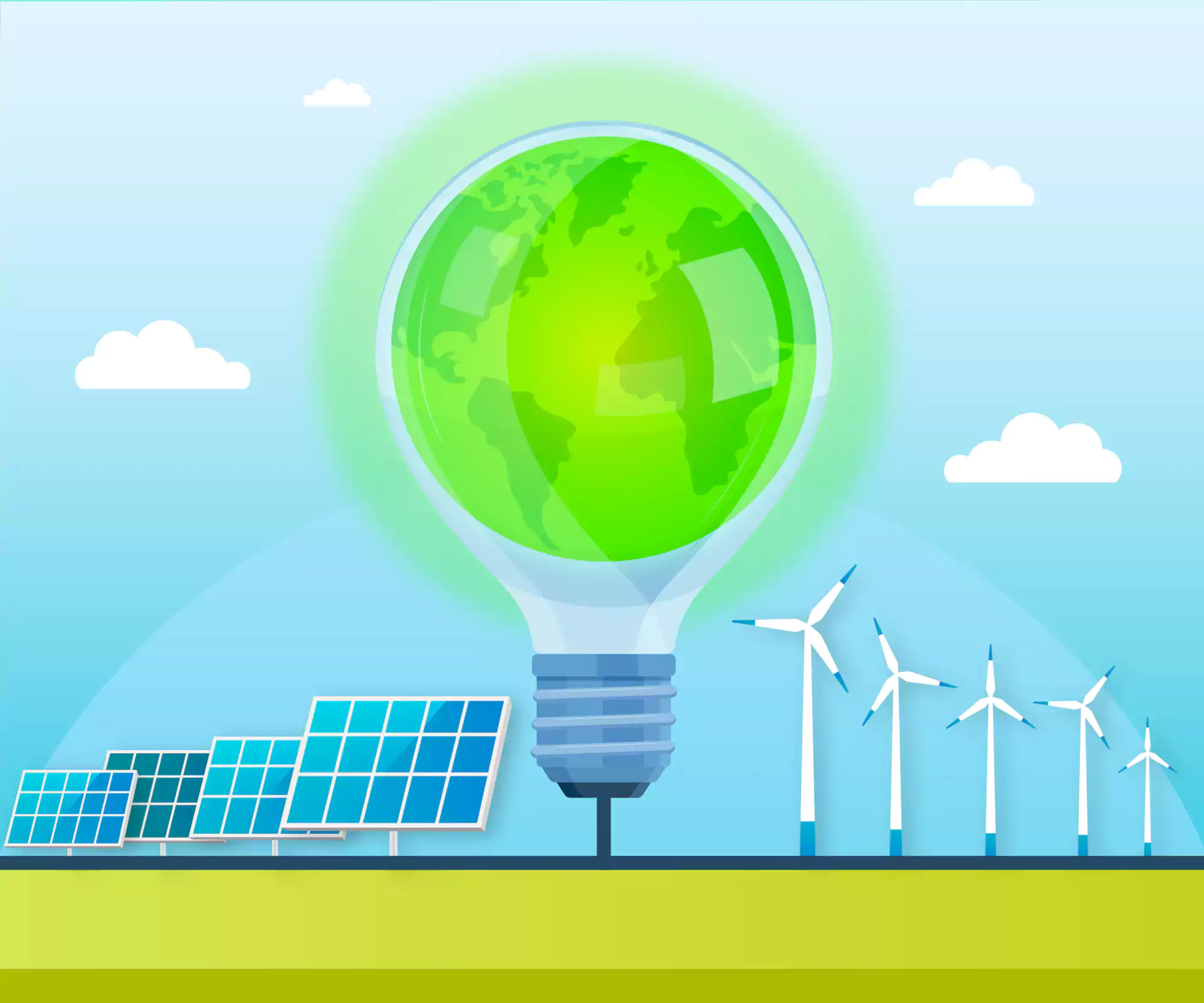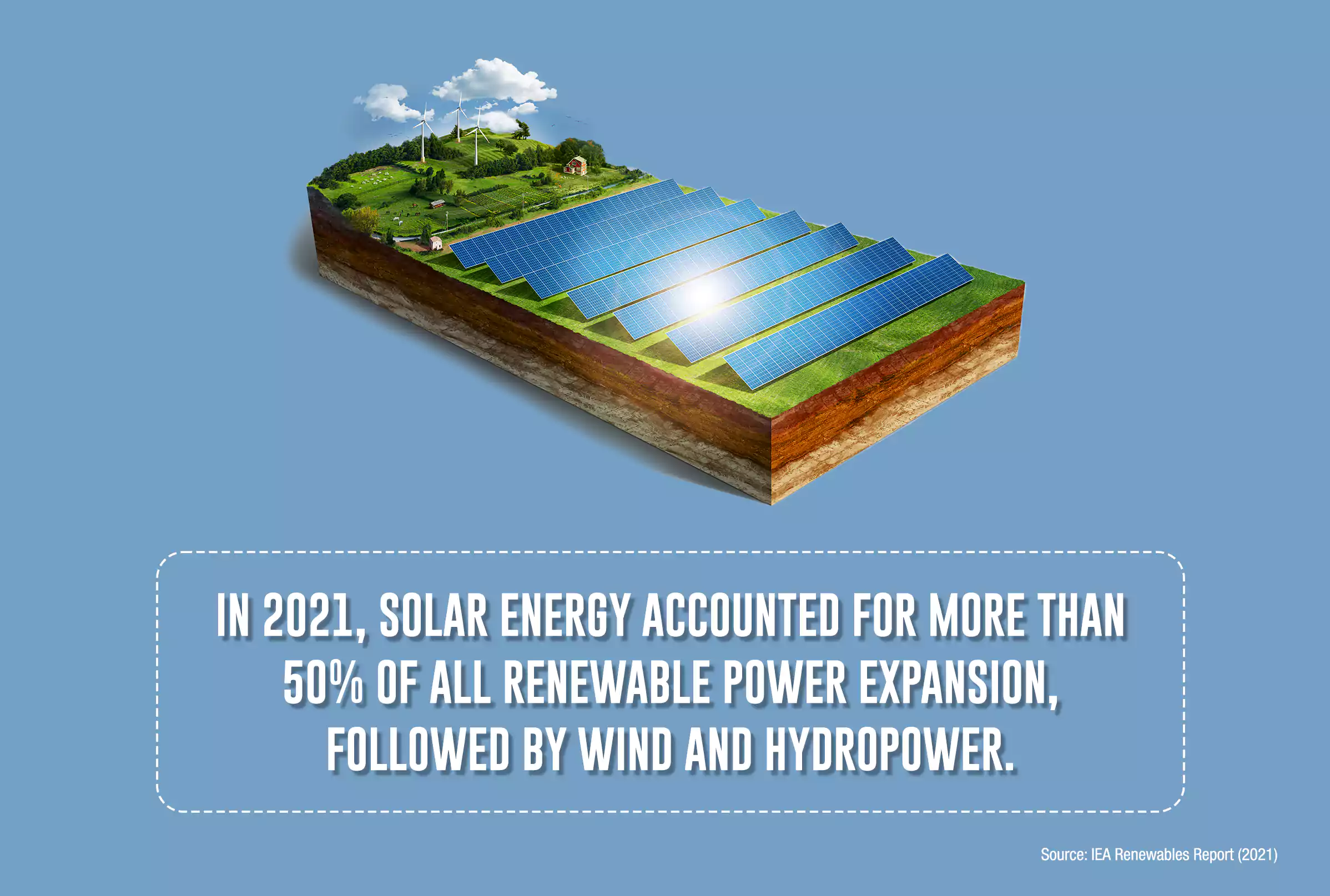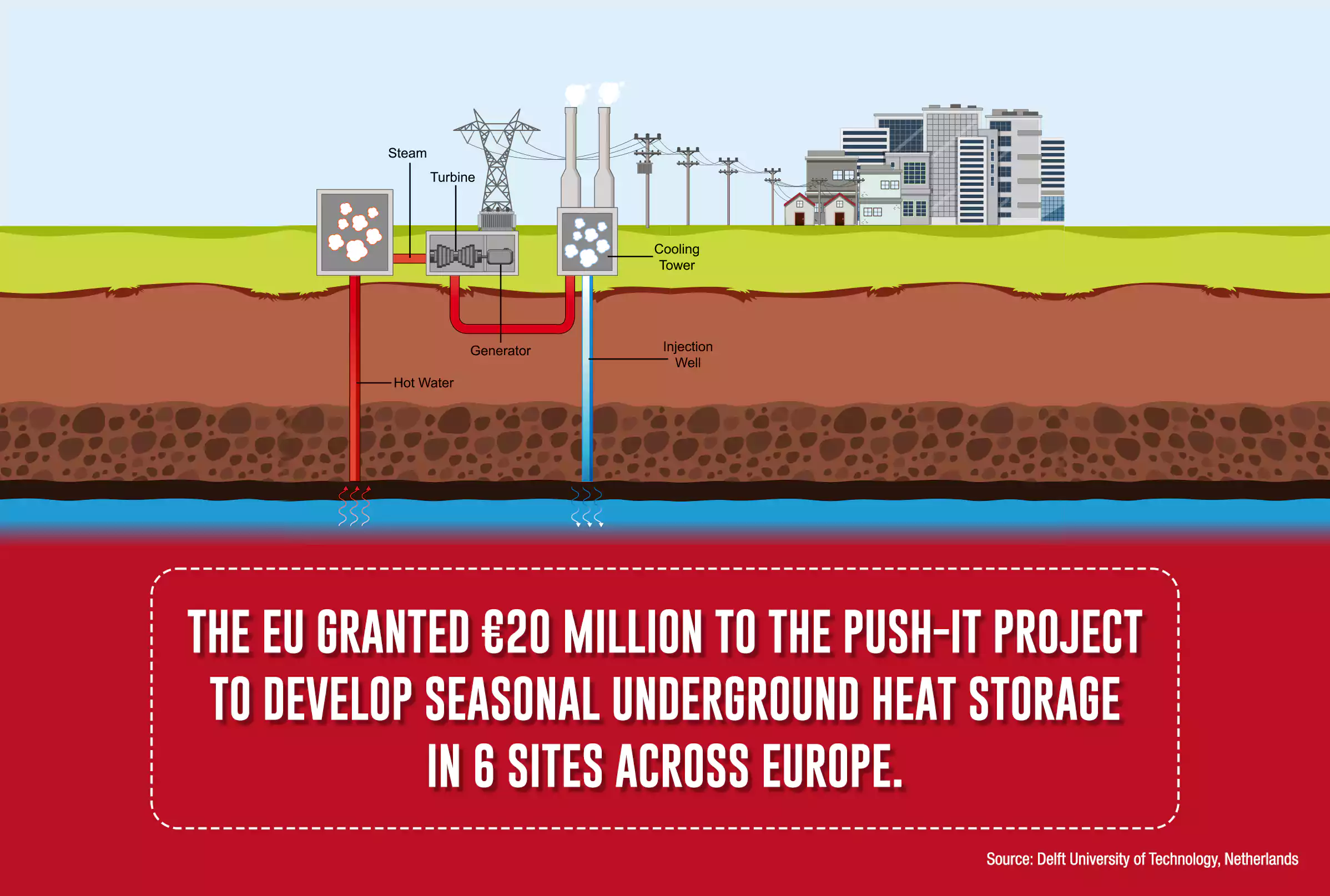
Coal, oil, and gas are possibly our most prized natural resources. Aggressive use of these fossil fuels since the Industrial Revolution has led to catastrophic effects, causing the economy and the environment to suffer. Apart from widespread pollution, the extensive extraction and utilisation of fossil fuels over a prolonged period have resulted in their rapid depletion. In its International Energy Outlook 2021, the US Environmental Protection Agency (EIA) has predicted an uncertain future for global crude oil reserves and other hydrocarbons beyond 2050. These and other such projections have spurred governments worldwide to speed up their adoption of renewable energy sources, mainly solar and wind. Recent data show renewables are making promising progress regarding their share in the final energy mix. For example, according to the International Energy Agency (IEA), the percentage of renewables in global electricity production stood at 27% in 2019; in 2020, it rose to 29%.
Energy storage: innovations to welcome and host renewables
A vital aspect of the energy generated through renewables is its storage. As countries continue to enhance their capacity in renewables, a new problem gains prominence. How do you deal with the excess energy produced during sunny days or high wind speeds? The solution lies in energy storage.
Developing energy storage solutions for surplus energy offers several economic and environmental benefits. For instance, a power company can save substantial operational costs through energy storage mechanisms. In addition, these storage solutions can reduce the need for frequency regulation (the balance between the demand and supply of electricity). Ultimately, the consumer will benefit from the significant reductions in their energy bills. Additionally, individual households can lower their consumption costs by installing energy storage equipment.
According to the International Renewable Energy Agency (IRENA), emerging electricity storage technologies can reduce the total cost of a Lithium-ion (Li-ion) battery by a whopping 54%-61% by 2030. In Germany, for instance, between 2014 and 2017, the total installed cost of Li-ion battery systems designed for small-scale applications decreased by 60%. Such significant drops in the overall costs have occurred due to successes in the economy, as companies have witnessed. Besides production, another area where companies can bring prices down is the manufacturing value chain of battery systems.
Thus, energy storage solutions are increasingly diverse and multi-faceted. They have created many research and investment opportunities for private organisations, which they now leverage. Let’s examine a few of them.

Saft develops a game-changing energy storage system
In September 2022, Saft, a French battery company and a subsidiary of TotalEnergies, announced the launch of a high-energy density storage system (ESS) called I-Shift. This energy storage system, powered by Li-ion battery technology, is optimal for time-shifting applications. Time-shifting enables the charging of the ESS when power is not in demand and discharging it when it is in need. This configuration is essential in ensuring the coming together of low-carbon energy technologies in a network of networks, also known as grid infrastructure. Furthermore, I-Shift allows the conversion of existing equipment with a 50% smaller carbon footprint while reducing the installation footprint by 50%.
MET Group begins installation of Tesla’s energy storage system in Hungary
MET Group, the Swiss energy leader, commenced the installation of Tesla’s MegaPack ESS in Hungary in September 2022. The MegaPack is a bundle of Li-ion batteries for the Dunamenti Power Plant. One of the objectives behind this move is to maintain the power balance in the grid during peak hours, ensuring uninterrupted supply to consumers. Furthermore, with a capacity to store excess power for two hours, this new-generation energy storage technology is an essential milestone in Hungary’s journey toward sustainable development.
Unique consortium for net-zero goals formed by global giants
In September 2022, a novel initiative began. Meta, Broad Reach Power, and other tech and energy giants forged this consortium called the Energy Storage Solutions Consortium. This new grouping aims at assessing and maximising the potential of energy storage solutions to reduce greenhouse gas (GHG) emissions. The consortium will develop a third-party, open-source methodology to make quantifiable assessments of GHG reductions. A select group of grid-connected energy storage projects worldwide will carry out these assessments. With this methodology, energy storage ventures across the globe can definitively show progress towards attaining net-zero emissions.
Alternatives to batteries as energy storage mediums
Battery storage systems have become a tour de force in renewables. However, the global search for other alternate energy storage solutions continues. One such solution is thermal energy storage systems. These systems use liquids such as water or solids such as rocks to store surplus energy from renewables. It is possible to extract this energy through complex chemical changes in the materials for driving power-heavy processes in buildings and industries. The Piloting Underground Seasonal Heat Storage In geothermal reservoirs (PUSH-IT) consortium, spearheaded by the Delft University of Technology, is a significant initiative for developing large-scale energy storage solutions.
PUSH-IT aims to make solar and geothermal heating available throughout the year. The consortium hopes to achieve its goals using underground structures that can store vast energy reserves. Aquifer thermal energy storage (ATES), borehole thermal energy storage (BTES), and mine thermal energy storage (MTES) are some of the technologies that PUSH-IT uses. The consortium received a grant of EUR 20 million in August 2022 from the European Union (EU). Using this grant, PUSH-IT will conduct demonstrations in six sites across Europe.

The future rests on renewables
GHG emissions, mainly carbon dioxide, have had unprecedented consequences on the planet and its natural cycles. The top priority for humans is moving away from fossil fuels as quickly as possible. Renewables are the only environmentally, economically, and politically viable option to conventional fuels. However, tapping into the full potential of renewable energy sources comes with enormous challenges. But, it is possible to overcome these challenges through dedicated research, positive international cooperation, and dynamic engagement between governments, private organisations, civil society, and academia. Nations must employ their best faculties and mobilise their most promising resources to ensure that future generations inherit a world worth living in and a planet worth protecting.



